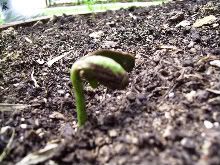- How are steam and water vapour (in Science) similar and different
- Are they visible?
- How are they produced?
How To Soar in PSLE - BTPS Way!!
Interact with complex questions / graphs / pictures to pick up valuable clues (don't highlight - just use your pen to underline words or scribble notes)
Start with Booklet A and do it meticulously with full focus - explore all 4 distractors before making final choice.
MANAGE your TIME - to score well, you need to try to finish ALL questions.
Specific answers = answers that are relevant to question.
When confused, choose any of the following strategies:
1. Ask, "What Science idea is being used in question?"
2. Pose other questions to clarify your thoughts
3. COMPARE to another set-up
4. COMPARE to a reverse situation
5. Connect to your knowledge in life (yes, you do have lots of prior / other knowledge)
6. Break down your answer in steps before crafting final answer.
Common problems with wrong answers:
*Answers are generic/vague and do not connect to that specific question
*Answers are not scientific and do not explain using Science ideas
*Answers do not make use of data provided when asked
*Answers did not make comparisons - use words like more/most etc..when asked
BTPS supports all P6 in achieving their PSLE GOALS!!
Start with Booklet A and do it meticulously with full focus - explore all 4 distractors before making final choice.
MANAGE your TIME - to score well, you need to try to finish ALL questions.
Specific answers = answers that are relevant to question.
When confused, choose any of the following strategies:
1. Ask, "What Science idea is being used in question?"
2. Pose other questions to clarify your thoughts
3. COMPARE to another set-up
4. COMPARE to a reverse situation
5. Connect to your knowledge in life (yes, you do have lots of prior / other knowledge)
6. Break down your answer in steps before crafting final answer.
Common problems with wrong answers:
*Answers are generic/vague and do not connect to that specific question
*Answers are not scientific and do not explain using Science ideas
*Answers do not make use of data provided when asked
*Answers did not make comparisons - use words like more/most etc..when asked
BTPS supports all P6 in achieving their PSLE GOALS!!
Tuesday, March 24, 2009
Steam or Water Vapour
Before I go on the last post on the water rockets in Think and Talk Science1, if you are keen on finding out more about the question, please check the following before our last discussion:
Subscribe to:
Post Comments (Atom)
Science Around Me (SAM)
SAM is a Science journal that allows pupils to express themselves in their favourite ways about Science.
SAM is another great opportunity for pupils to THINK and TALK Science in a medium that is customised to their learning styles.
SAM allows teachers to informally assess understanding of the child and clarify misconceptions in their learning.
SAM is another great opportunity for pupils to THINK and TALK Science in a medium that is customised to their learning styles.
SAM allows teachers to informally assess understanding of the child and clarify misconceptions in their learning.
Factors Affecting the Environment by Gog Ru Yan - 6G

When Ice Changes into Water by Goh Chee Yan - 5G
Do you wonder whether the mass of ice changes when it melts into water. Try this out:
1. Put a few ice cubes into a plastic bag
2. Tie the mouth of the bag tightly
3. Weigh the bag of ice cubes (if there is condensation outside the bag, wipe it dry before weighing)
4. Place the bag in the sun
5. When ice has melted, wipe the outside of the bag dry (refer to step 3)
6. Weigh the bag
You will discover that the mass of the bag remains the same!
There is no change in mass when ice melts!!
1. Put a few ice cubes into a plastic bag
2. Tie the mouth of the bag tightly
3. Weigh the bag of ice cubes (if there is condensation outside the bag, wipe it dry before weighing)
4. Place the bag in the sun
5. When ice has melted, wipe the outside of the bag dry (refer to step 3)
6. Weigh the bag
You will discover that the mass of the bag remains the same!
There is no change in mass when ice melts!!
Simple Steps to fight Dengue by Elizabeth Wu 4C







7 comments:
Steam and Water Vapour is basicly alike . One is near optimal water point, around 100 degrees celcius while the other is not. They are not visible! Most liquids at gaseous state are invisible! They are produce by boiling, transpiration, evaporation.
Actually steam could be seen with a faint colour but we cannot se water vapour. We also can feel steam which is like warm air but I don't think we cannot see water vapour. But both of them are produce during boiling and evaporation.
by: Shanice Yeo(6G)
steam and water vapour are similar as they are invisible.they are different as steam can only be produced at around 100 degrees celsius,while water vapour can be produced at anytime and at any temperature.steam is produced through boiling of liquids while water vapour is produced through evaporation of liquids.and another difference is that steam can only be produced through boiling of liquids,water vapour on the other hand,other than it can be produced through evaporation,it can also be produced through respiration,transpiration and even boiling...
tan siqi
6grace
-What is steam?
Steam is generated when the water is boiled to a temperature of 100 degree celcius.It is visible outside the pot^^
-What is water vapour?
Water vapour is generated anywhere and it is not generated when the temperature reaches to a particular one like steam. It can be generated if there is any difference in water and the air. The stronger heat from the Sun, the faster the water will evaporate and generate water vapour.
Most gases are invisible but mist can be usually seen, near the cold ice cream or when you breathe out in the winter. This is caused by the sudden difference in the temperature. But, the mist will not last long.
Youn Yea Won Ellia (6C)
What is water vapor?
Water vapor is water in its gaseous state-instead of liquid or solid (ice). Water vapor is totally invisible. If you see a cloud, fog, or mist, these are all liquid water, not water vapor. Water vapor is extremely important to the weather and climate. Without out it, there would be no clouds or rain or snow, since all of these have their source in water vapor. All of the water vapor that evaporates from the surface of the Earth eventually returns as precipitation - rain or snow. Water vapor is also the Earth's most important greenhouse gas, giving us over 90% of the Earth's natural greenhouse effect, which helps keep the Earth warm enough to support life. When liquid water is evaporated to form water vapor, heat is absorbed. This helps to cool the surface of the Earth. This "latent heat of condensation" is released again when the water vapor condenses to form cloud water. This source of heat helps drive the updrafts in clouds and precipitation systems.
steam is actually Hot water vapour that is caused by boiling of water .In physical chemistry, and in engineering, steam refers to vaporized water. It is a pure, completely invisible gas At standard temperature and pressure, pure steam (unmixed with air, but in equilibrium with liquid water) occupies about 1,600 times the volume of an equal mass of liquid water. In the atmosphere, the partial pressure of water is much lower than 1 atm, therefore gaseous water can exist at temperatures much lower than 100 °C (212 °F)
Both are invisible And steam is produced when there is boiling while water vapour is by transpiration, evaporation and respiration
han sheng 6Grace
Steam and water vapour are both water in their gaseous state. Steam... i guess u can feel the warm air but not for water vapour.Steam is produced when water is boiling, at 100 degrees celcius while water vapour is produced when water evaporated. Evaporation can happen at any where,any time,any temperature.
Kai Ting
The similar about steam and water vapour is they are invisible. However, steam is only produced when water is at the boiling point, but water vapour is present only when there is water being heated.
Ben Wu, 6grace
Post a Comment